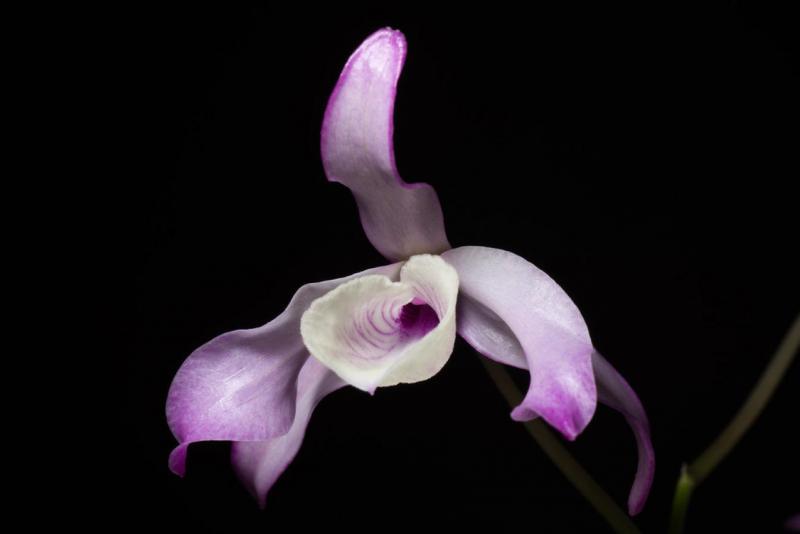Dendrobium tortile
Also known as: The Twisted Dendrobium or Dendrobium tortile h.v. giganteum Dendrobium tortile h.f. roseum Dendrobium tortile h.v. dartoisianum Dendrobium dartoisianum Dendrobium haniffii In Thailand - Khao kiu in the subfamily: Epidendroideae
Native to: India Thailand
General Information
The Twisted Dendrobium is a small to medium sized sympodial cool to hot growing epiphytic, lithophytic or terrestrial orchid belonging to the sub family Epidendroideae native to India and Thailand.
Plant Description
Sympodial. Grows to 15-45cm. Each new growth has numerous leaves that grow to 10cm long. Pseudobulbs grow to 15-45cm
Flowers
Numerous long lasting, fragrant, self pollinating blossoms appear during Spring
Fragrance
The orchid is fragrant.
Blooming Season
- Spring
Substrate(s)
- Coarse
Care Notes
This orchid goes into a dormancy phase during winter, during this phase it is best not to provide water unless the plant is starting to look thirsty. The lack of water increases the chance of flowering in spring, and also reduces the likelihood of any rot forming. Do not resume watering until new growth has appeared and is growing strongly.
Often a period of intense growth occurs after dormancy. During this time the amount of light, water and fertiliser the plant receives will directly impact the amount of growth that occurs during this time, and in the case of seedlings, will reduce the time required to reach maturity.
It's recommended to heavily reduce the water amount at the middle to end of autumn to trigger dormancy. Leaves on older bulbs will begin to drop during this time while the newer bulbs continue to mature until terminal leaves appear at the tip of the pseudobulbs.
Repotting can be done any time of the year though it's best to do it in early spring when new growth is appearing as this also means new roots will appear to help the plant anchor into the new media and offset any damage to established roots during the repotting process.
Fragrant:
- IsFragrant
Climate
Grows at low to high elevations. Rainfall ranges from 5mm to 251mm per day, heaviest in August and lightest in February. Humidity ranges from 50% to 83%, highest in August and lowest in March. Temperature ranges from 9C to 32C, highest in April (20C to 32C) and lowest in January (9C to 25C).
Watering
These orchids prefer a constant supply of moisture, with a slight drying out between waterings. Saucers can be placed under pots to retain moisture during hot weather, however the saucers should be removed or let to dry every 1-2 weeks to prevent rot. Keep an eye on the plant especially in hot weather and look for cues of under/overwatering and adjust accordingly.
Keep moisture levels up during hot weather as the plant is prone to dehydrationFertiliser
dormant-medium-demand-orchid Apply fertiliser regularly at half strength year round. Use a high Nitrogen fertiliser during Spring and Summer. Use a high Phosphorous fertiliser during Summer.
Potting
These plants can be sensitive to repotting though should not require repotting regularly. Repotting should be done when the mix has broken down to the point that it doesn't absorb water or holds onto water for far too long, usually the plant shows a decline in growth as well. Repotting is best done after the growing season when the plant has died back.
The mix should be free draining, with a blend of 30% inorganic ingredients such as coarse sand, gravel or perlite, mixed in with about 70% organic ingredients such as peat, leaf litter or decomposed bark. Avoid commercial potting mixes as they can vary wildly and may contain "wetting agents" that can hold onto water for loo long, causing rotting and stunted growth.





















